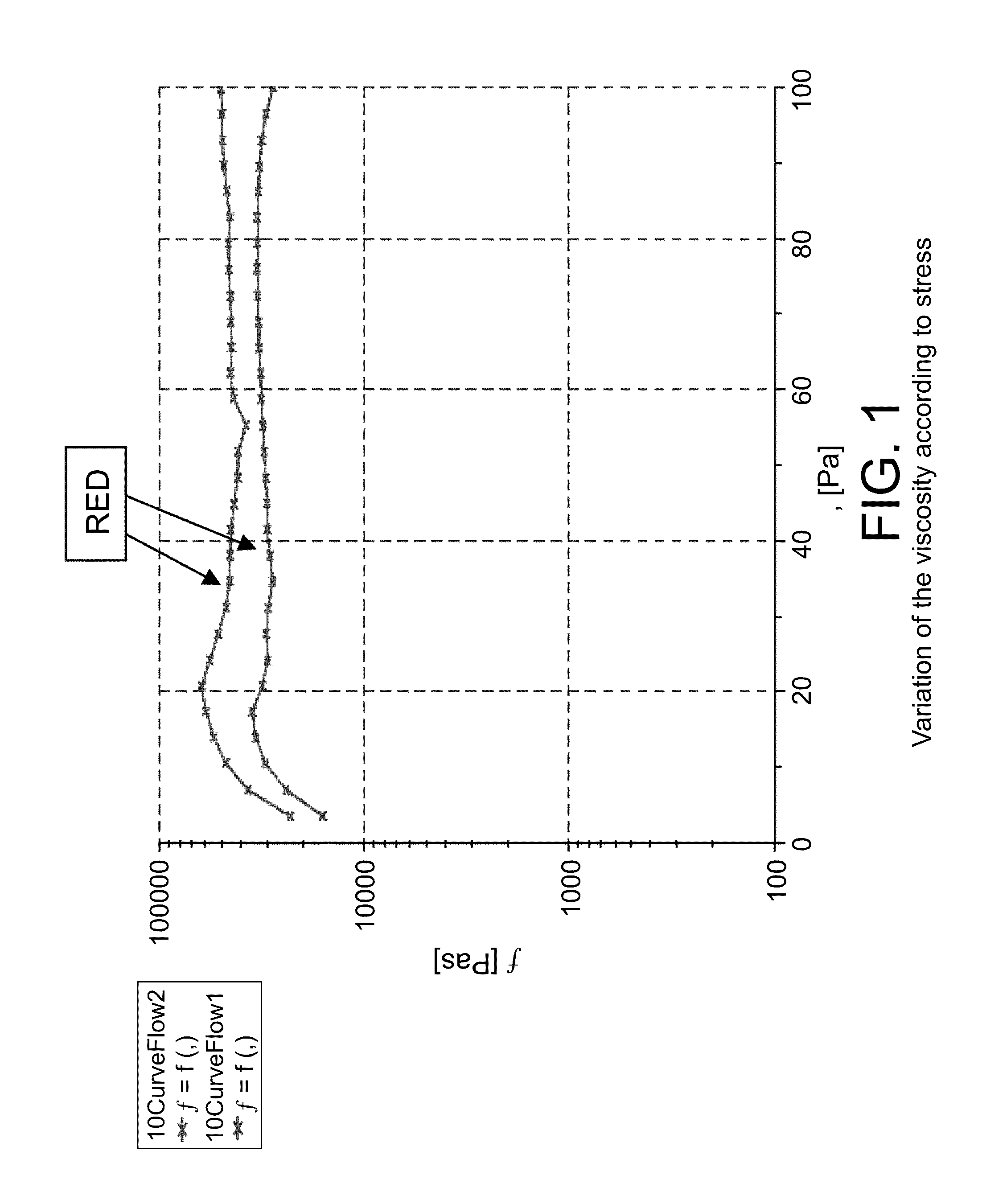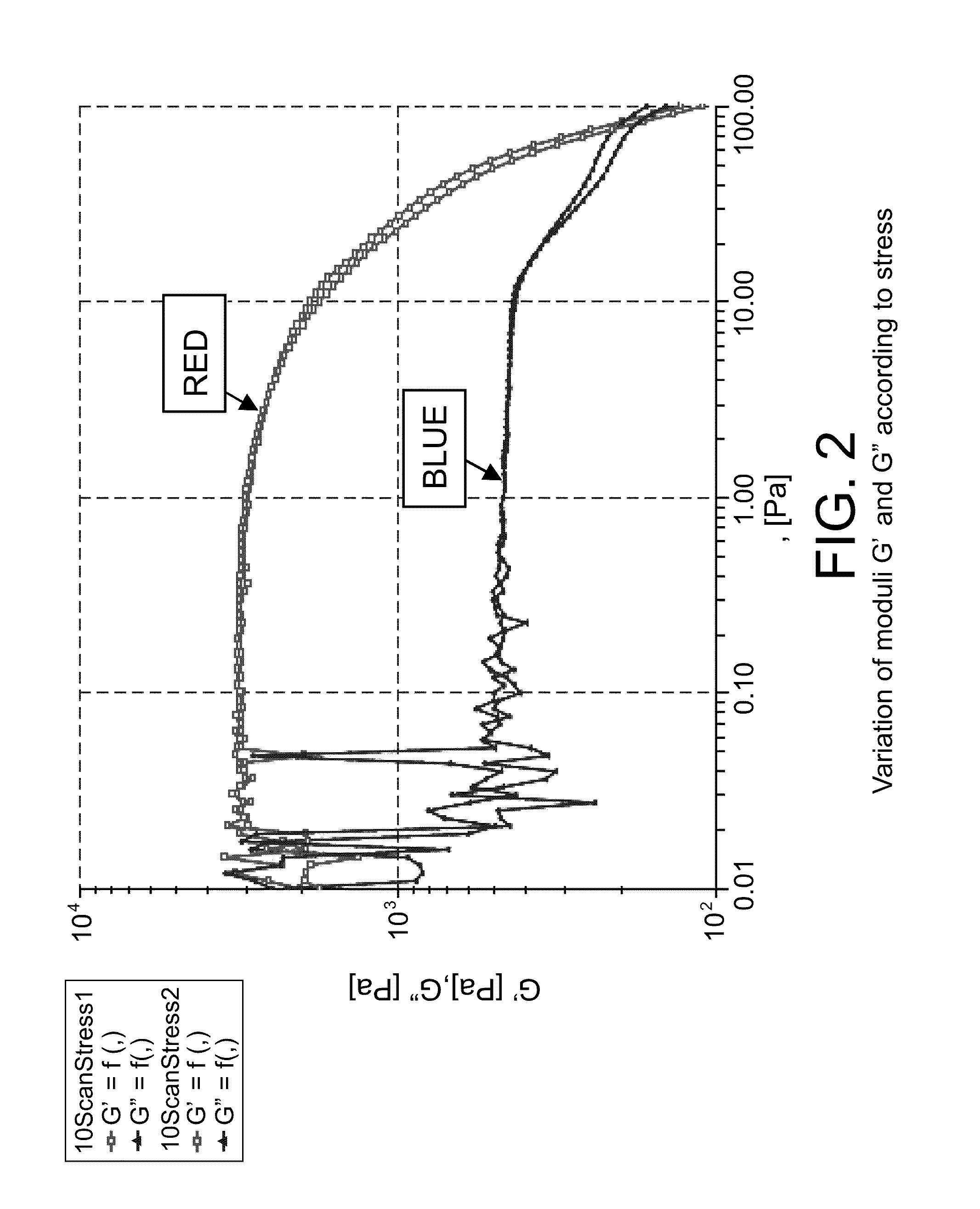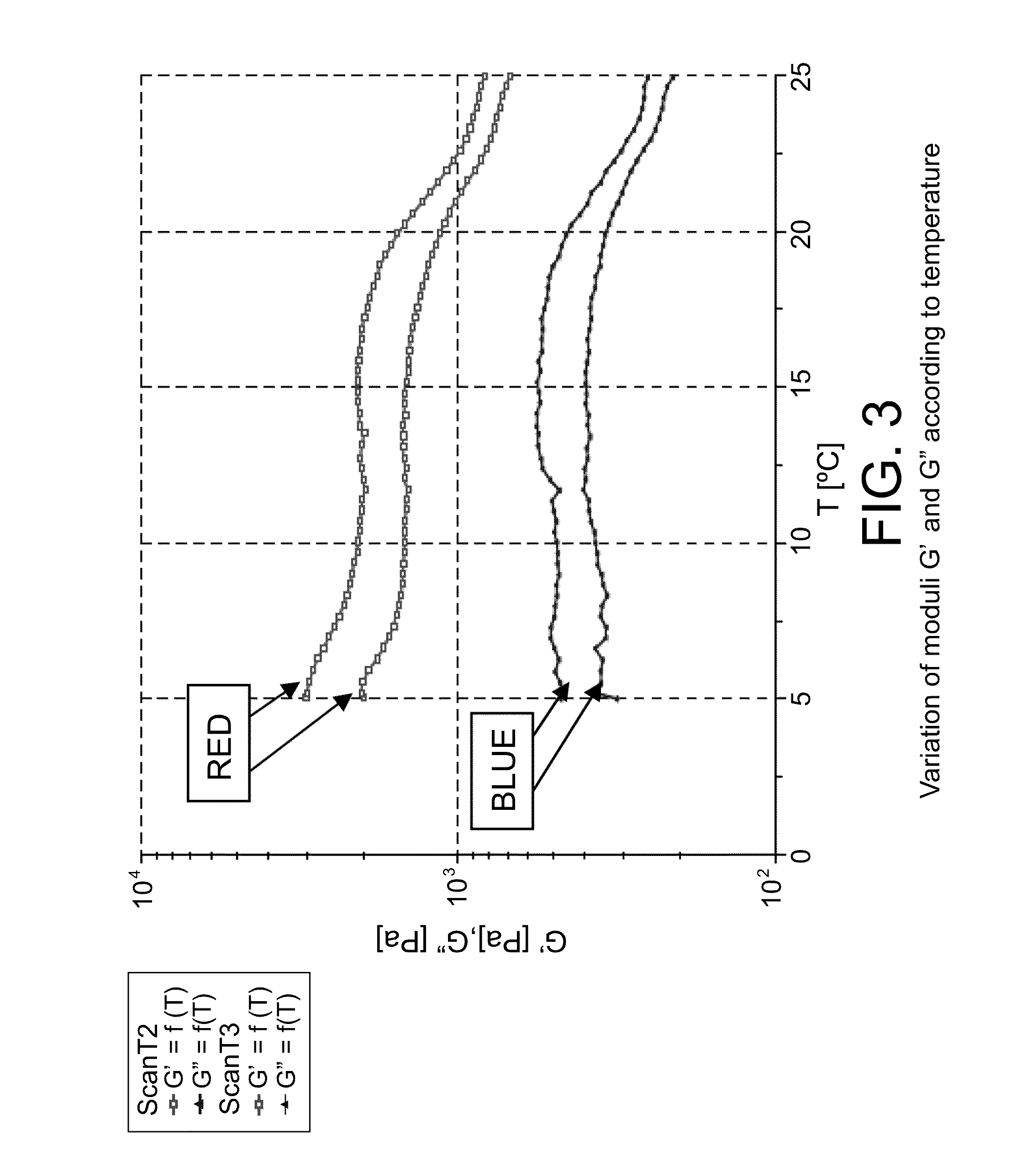Butter and process for obtaining same
a technology of butter and process, applied in the field of butter, can solve the problems of reducing the useful life and shelf life of butter, reducing the organoleptic characteristics and quality of butter, and reducing the shelf life of butter
- Summary
- Abstract
- Description
- Claims
- Application Information
AI Technical Summary
Benefits of technology
Problems solved by technology
Method used
Image
Examples
example 1
Process for Manufacturing a Light Butter with a Final Fat Content Equal to 40% and a Total Dry Extract of 50%
[0065]In a tank provided with stirring, 68.10 kg of thermized cream with 40% fat analyzed by means of a butyrometer were incorporated. On this cream, 15.80 kg of butter, 9.90 kg of water, the texturing agents (see Table 1), colorant (50 ml of β-carotene) and 100 ml of butter flavor were added. This mixture was ground and mixed at 25° C. The heating occurred by means of injecting steam into the mixture. Citric acid was added to this mixture until reaching a pH of between 5.6-6, for the purpose of reducing the acidity and, therefore, the sterilization temperature.
[0066]The mixture was then preheated in a scraped surface heat exchanger to 70° C. This mixture was passed through a 1 mm mesh filter. It was then sterilized by means of injecting steam. The temperature of the mixture thus rose to 130° C., which was maintained for 10 seconds. For the purpose of extracting the injected ...
example 2
Manufacture of a Light Butter with a Final Fat Content Equal to 55% and a Total Dry Extract of 60%
[0068]In a tank provided with stirring, 81 kg of thermized cream with 40% fat analyzed by means of a butyrometer were incorporated. On this cream, 40 kg of butter, 2.95 kg of water and texturing agents (gelatin, milk proteins, alginate, gum, starch), flavor and colorants were added.
[0069]This mixture was ground and mixed at 30° C. The heating occurred by means of injecting steam into the mixture. Citric acid was added to this mixture until reaching a pH of 5.7 for the purpose of reducing the acidity and, therefore, the sterilization temperature.
[0070]The mixture was then preheated in a scraped surface heat exchanger to 70° C. This mixture was passed through a 2 mm mesh filter. It was then homogenized at 20000 kPa (200 bar) of pressure and sterilized by means of injecting steam. The temperature of the mixture thus rose to 130° C., which was maintained for 15 seconds. For the purpose of e...
example 3
Manufacture of a Light Butter with a Final Fat Content Equal to 30% and a Total Dry Extract of 40%
[0072]In a tank provided with stirring, 50 kg of thermized cream with 40% fat analyzed by means of a butyrometer were incorporated. On this cream, 11 kg of water, 3 kg of starch and texturing agents were added. This mixture was ground and mixed at 15° C.
[0073]The mixture was then preheated in a scraped surface heat exchanger to 80° C. This mixture was passed through a 2 mm mesh filter. It was then sterilized by means of injecting steam. The temperature of the mixture thus rose to 155° C., which was maintained for 15 seconds. For the purpose of extracting the injected steam again, the product was subjected to a vacuum of 50 kPa. The temperature at the outlet of the vacuum chamber was regulated at 80° C., and it was homogenized at 20000 kPa of pressure and the product was then cooled in a tubular heat exchanger at 50° C. and the packaging of the product was performed.
[0074]The low viscosi...
PUM
 Login to View More
Login to View More Abstract
Description
Claims
Application Information
 Login to View More
Login to View More - R&D
- Intellectual Property
- Life Sciences
- Materials
- Tech Scout
- Unparalleled Data Quality
- Higher Quality Content
- 60% Fewer Hallucinations
Browse by: Latest US Patents, China's latest patents, Technical Efficacy Thesaurus, Application Domain, Technology Topic, Popular Technical Reports.
© 2025 PatSnap. All rights reserved.Legal|Privacy policy|Modern Slavery Act Transparency Statement|Sitemap|About US| Contact US: help@patsnap.com



